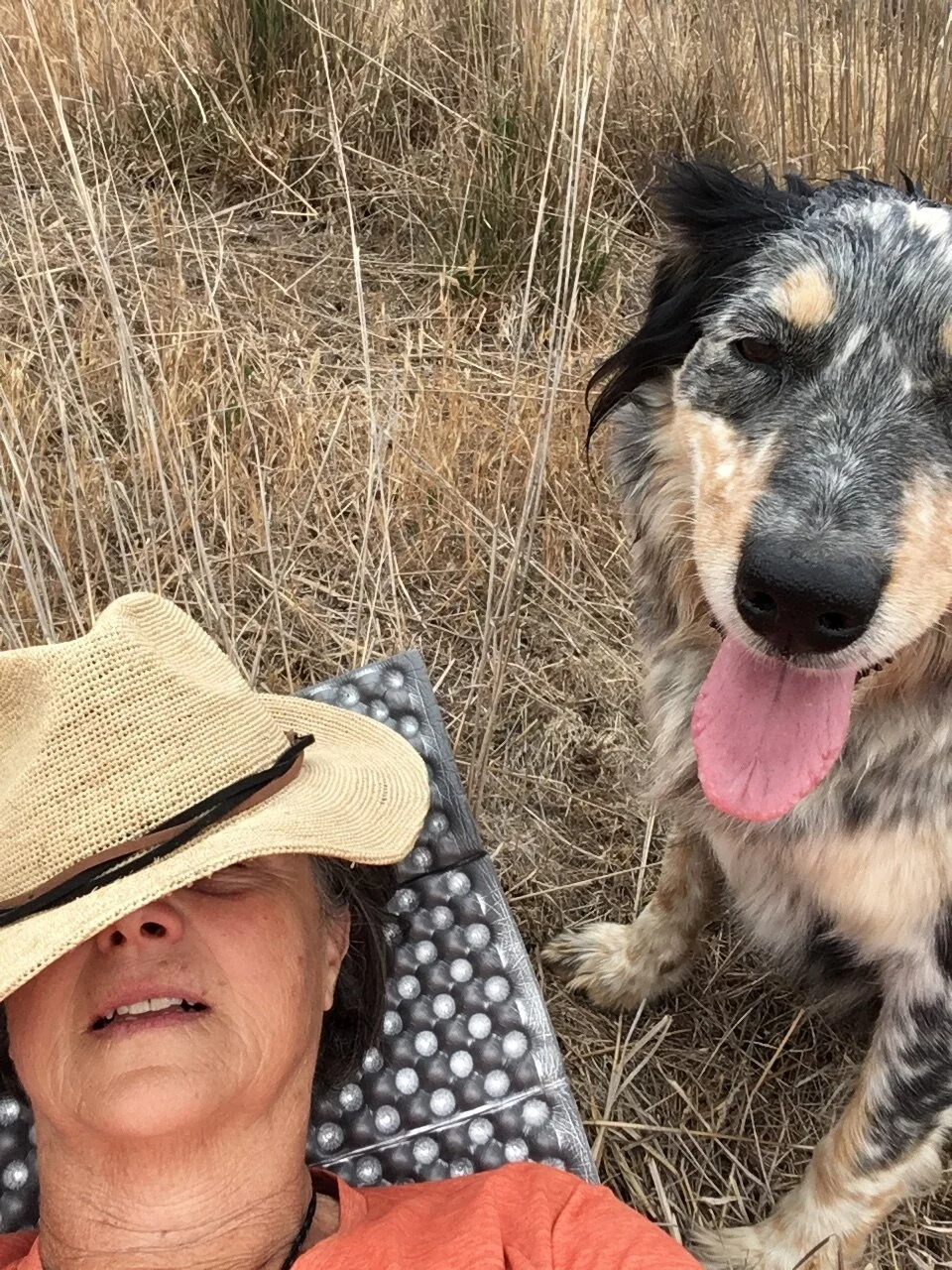A nice patch of ryegrass in the Lucerne Paddock. I think that’s Vicky gazing at me adoringly. Or not.
The challenges of keeping everyone well-nourished in this exceptionally dry summer are leading me into the shepherding equivalent of stone soup: creative use of the patches of good forage and biodiversity that are still around, while still keeping the flock safe from fire threats.
The safest fire muster paddocks are in the Racecourse Grazing Area, near the old main yards. This is just because I can get the sheep into the yards quickly from several of those paddocks, and I’m confident I can defend the sheep using my firefighting unit to spray them and the yards down more or less continuously in case of fire.
However, the Racecourse GA is poor in diversity, with tough, drought-resistant cocksfoot grass the dominant forage. It’s perfectly edible, just not particularly appetising or at all diverse. So I need to do a fair bit of shepherding to give the sheep fresher, more interesting places to eat. Take a dry cocksfoot paddock, add some lucerne, a touch of native morning glory, some native grass, a few thistles, some young native tree leaves, voila! You get the idea.
My stone soup compromise is something I’ve never done before: multi-day circuits to the back country during periods of low fire danger, returning to the Racecourse when things heat up. Starting yesterday, the 10th of January, I embarked on the 3-day Stone Soup shepherding circuit shown below. As I write this, it’s Saturday afternoon, and we’ve made it as far as Eagle Tree, in relatively easy stages from Curly Sedge via the Lucerne Paddock, Old Cabin, and the Basin last night. We need to back on the Racecourse by Monday morning, as that’s the next very high fire danger day in the long-range forecast.
Full-day shepherding, as is done by professional shepherds in the French Alps, is a whole different ballgame from the 2-3 hour stints I usually do. And summer is particularly challenging as the sheep normally rest through the heat of the afternoon, so any serious eating is done first thing in the morning and in the cool of evening.
My compromise is to move the sheep in stages—an early morning move through and to appetising places, followed by a couple of hours to rest and ruminate. Then another stage to get to water and an area for the long afternoon siesta. And finally a shift in the evening to another appetising area, preferably with water, for the night. In France, sheep are penned up at night, to protect them from predators, something I don’t need to do, thankfully.
Silly old Horatio made a last minute dash for freedom, instead of following the rest of the flock through the gate. We went back and convinced him of the error of his ways.
I’d forgotten, though, just how utterly impossible it is to move sheep who are ready for a ruminate and/or rest. Pearl and I nearly exhausted ourselves yesterday coming up the steep hill into the Basin just before lunch. We finally gave it up—I’d like to say sense prevailed, but I think it was more despair. The sheep of course came up on their own quite nicely in the cool of evening, and enjoyed the fresh bit of forage around the big waterhole in the Basin overnight.
Pearl’s selfie when we sat down to rest after temporarily giving up trying to move the flock up the steep hill. We tried again after this, but finally gave up and went home for our own mid-day rest.
This morning, we picked them up from the waterhole and put them into the tree reserve in the Back Gully for morning tea, then into Eagle Tree this afternoon. Our plan is to move into the north highway reserve tonight, ready for the somewhat tricky leg down and back the old highway, which is lined with gorse, broom and sandstone cliffs.
Fingers crossed we’ll make it back for our Monday morning date with fire weather.
Coming out of the tree reserve this morning. That’s Freddie scratching.






